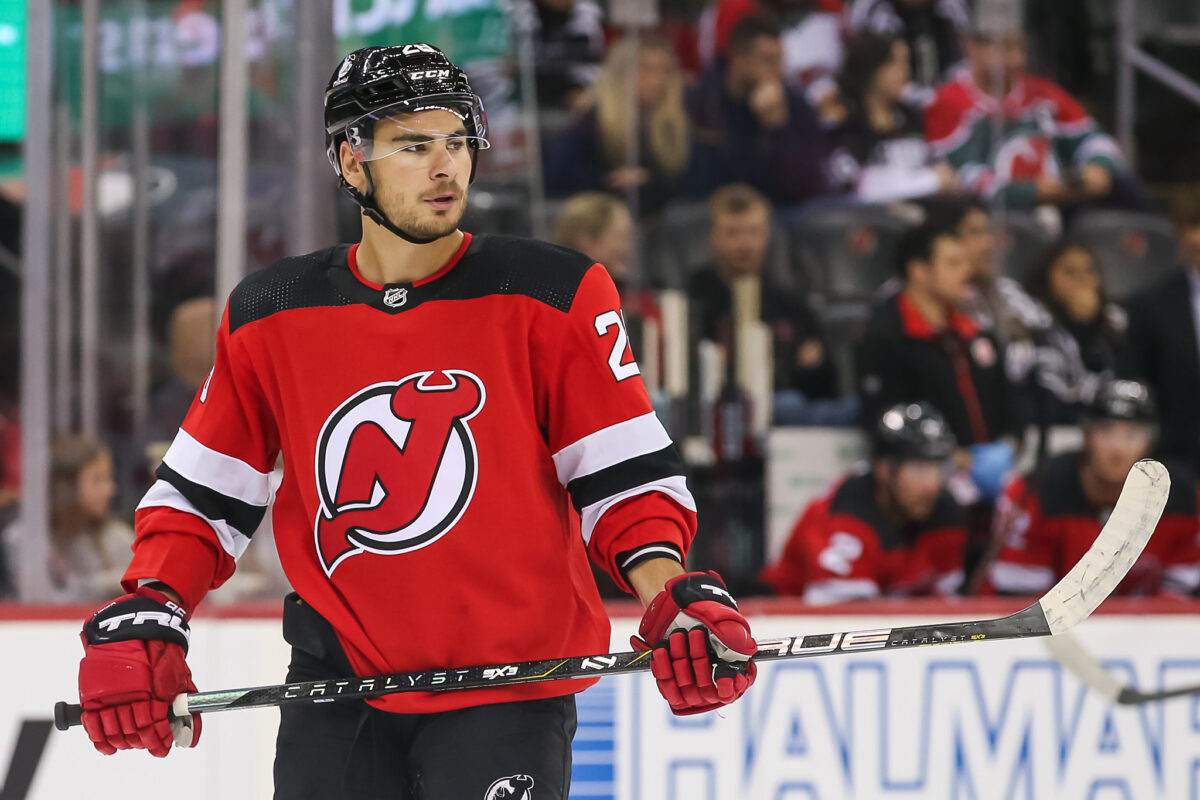When the New Jersey Devils had their struggles this season, it typically wasn’t for a lack of defense. According to Natural Stat Trick, their 220 goals allowed (2.68 per game) ranked fifth-best in the NHL. On many occasions, it bailed them out of some pretty rough offensive showings.
Related: Devils’ Targets for First 3 Picks in 2025 NHL Draft
Of course, much of that success can be alluded to an improved defensive core – one that’s laden with steady and reliable veterans. But forwards also play an important part of a team’s defense; star forwards Jack Hughes and Timo Meier both saw tremendous improvement in that category, as did most forwards in head coach Sheldon Keefe’s first season.
Jack Hughes’ Massive Step
As an offensive-minded forward, Hughes hadn’t previously been someone who excelled on the defensive side of the puck. With the exception of the shortened COVID season in 2020-21, Rono Hockey’s advanced data shows that Hughes was below league average defensively every season of his career.
Under Keefe, that changed dramatically. Hughes was in the 81st percentile of league defensive impact this season, making him one of the better defensive forwards in the league. Hughes had the second-biggest improvement on the Devils, moving from the 40th percentile to 81st in just one season. That trailed only Meier.

In fact, Hughes became so reliable defensively that he became a mainstay on the penalty kill. In over 51 minutes of time on the kill, the Devils outscored the opposition 2-1. Hughes’ 30.03 expected goals for percentage (xGF%) in those situations led the entire NHL, and it’s not that close. The next closest was Brad Marchand with a 26.34 xGF%.
When Keefe started to deploy him in those situations, he said, “(Jack’s) just smart. You know, I’ve seen enough good things five-on-five from Jack in terms of his commitment level defensively. He’s been in every single penalty kill meeting we’ve had right from training camp on through (…) I think he’s done a good job.”
At even strength, the opposition scored just 2.21 goals per 60 minutes (GF/60) when Hughes was on the ice this season. That was sixth-best among forwards on the Devils, but they also scored 3.15 GF/60 with him on the ice. None of the five better defensive forwards were on the ice for more than 2.52 GF/60 (Nico Hischier). It’s extremely rare that a player that offensively gifted excels so much defensively. Prior to his season-ending injury, Hughes was on pace for ~93 points and a plus-16 rating.
Timo Meier’s Complete Defensive Overhaul
If you thought Hughes made a big jump, wait until you see this: Meier went from one of the worst defensive forwards in the entire league last season (8th percentile) to legitimately one of the best now (87th percentile). He’s often subject to criticism because of his struggle to finish chances at times, but there’s no questioning that Meier was still a huge net positive. The strides he made on the defensive side will pay dividends for the team in the long run.
The opposition scored just 1.65 GF/60 when Meier was on the ice this season, which leads all Devils forwards and trails only Jonas Siegenthaler (1.56 GF/60) among the entire team. While he remained streaky and only scored 26, which is low for his standards, the Devils still had 59.26% of the goal share when he was on the ice. That led the Devils and ranked 24th among 157 NHL forwards to play 1000+ minutes.

Furthermore, it’s that exact lack of finishing that hinders how great Meier’s defensive improvement has been. With the chances he generated, if he finished at just a league average rate, that would’ve propelled him to having the fourth-highest goal share in the entire NHL (64.44%).
It’s also important to note that Meier wasn’t utilized often on the top power play until Hughes went down, where he then proceeded to score 10 goals in 20 games – a 41-goal pace over a full season. If he’s able to maintain the same kind of defensive prowess and get his finishing touch back, plus get some top power play time, he will be an absolute monster.
What’s In Store for Year 2!?
These numbers are great signs, but even if healthy, the Devils have some work to do in the offseason to ensure they can be considered contenders. With the promising addition of Brad Shaw as assistant and many players now comfortable in Keefe’s system, the right moves will put them in a pretty good spot.




